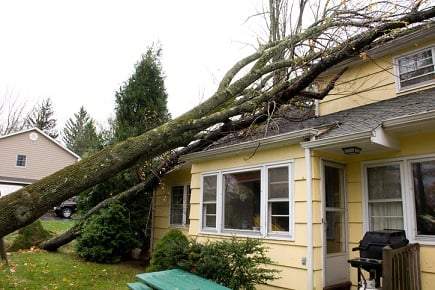The parts of the US most at risk of natural disasters are also the places where home values are rising most quickly

It’s been a bad few weeks for natural disasters. A series of hurricanes ripped through Texas, Florida, and the Caribbean, killing hundreds and racking up hundreds of billions of dollars in damage. Wildfires are raging in the Western U.S., and a pair of powerful earthquakes have battered Mexico.
Amid the terrifying recent events is a worrisome finding from a new report: The parts of the U.S. most at risk of natural disasters are also the places where property values are highest and increasing most quickly.
The chart comes from Attom Data Solutions’ natural hazard index, which matches geographic areas to government data on risk of flood, earthquake, tornado, wildfire, hurricane, and hail.
The riskiest 20 percent of U.S. counties have the most homes, the highest average home values, and the greatest price appreciation in recent years. Why? Buyers who pay premiums for ocean views and mountain lookouts may be getting some additional disaster risk as part of the bargain, said Daren Blomquist, senior vice president at Attom. Those kinds of geographical attributes are likely secondary factors in driving price appreciation, though. More importantly, Attom’s list of disaster-prone areas overlaps with engines of economic activity.
“The primary reason people buy a home somewhere is that there are jobs there,” said Blomquist.
In the aftermath of hurricanes such as Harvey and Irma is a tendency to question the wisdom of building population centers in low-lying areas unequipped to handle flooding caused by those storms. In recent years, however, homebuyers in flood-prone parts of the country appear to be factoring in the risk of such disasters, according to Blomquist. For example, the riskiest parts of Florida and Louisiana have been appreciating more slowly than safer parts of those states.
California, on the other hand, is driving the trend toward higher prices in more perilous locales. Earthquake risks abound throughout the state, while robust job growth and restrictive housing policies have driven rapid home price appreciation.
Amid the terrifying recent events is a worrisome finding from a new report: The parts of the U.S. most at risk of natural disasters are also the places where property values are highest and increasing most quickly.
The chart comes from Attom Data Solutions’ natural hazard index, which matches geographic areas to government data on risk of flood, earthquake, tornado, wildfire, hurricane, and hail.
The riskiest 20 percent of U.S. counties have the most homes, the highest average home values, and the greatest price appreciation in recent years. Why? Buyers who pay premiums for ocean views and mountain lookouts may be getting some additional disaster risk as part of the bargain, said Daren Blomquist, senior vice president at Attom. Those kinds of geographical attributes are likely secondary factors in driving price appreciation, though. More importantly, Attom’s list of disaster-prone areas overlaps with engines of economic activity.
“The primary reason people buy a home somewhere is that there are jobs there,” said Blomquist.
In the aftermath of hurricanes such as Harvey and Irma is a tendency to question the wisdom of building population centers in low-lying areas unequipped to handle flooding caused by those storms. In recent years, however, homebuyers in flood-prone parts of the country appear to be factoring in the risk of such disasters, according to Blomquist. For example, the riskiest parts of Florida and Louisiana have been appreciating more slowly than safer parts of those states.
California, on the other hand, is driving the trend toward higher prices in more perilous locales. Earthquake risks abound throughout the state, while robust job growth and restrictive housing policies have driven rapid home price appreciation.



